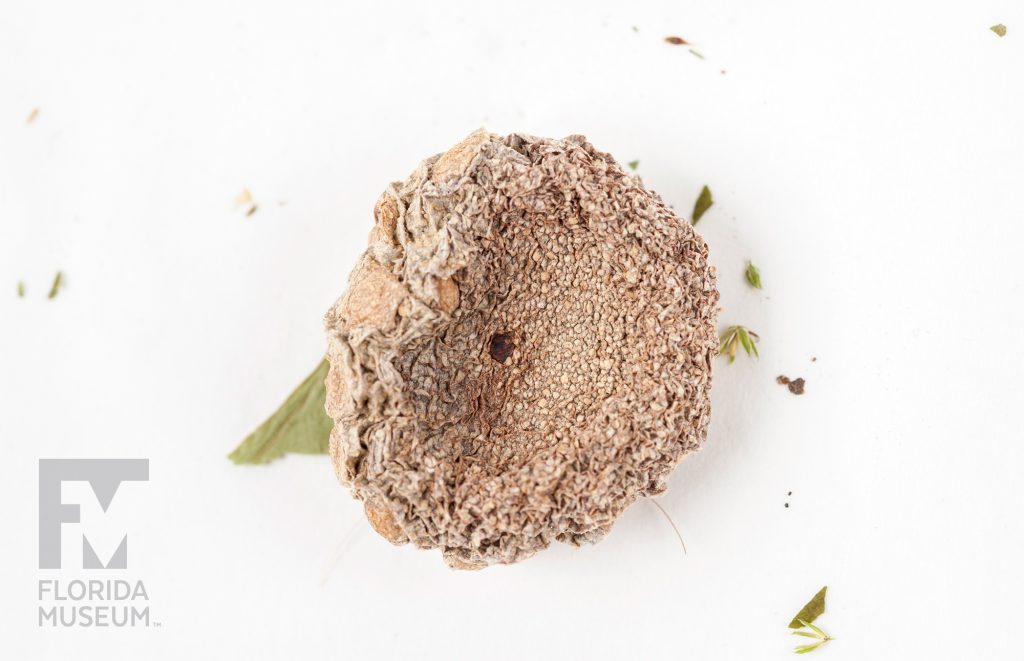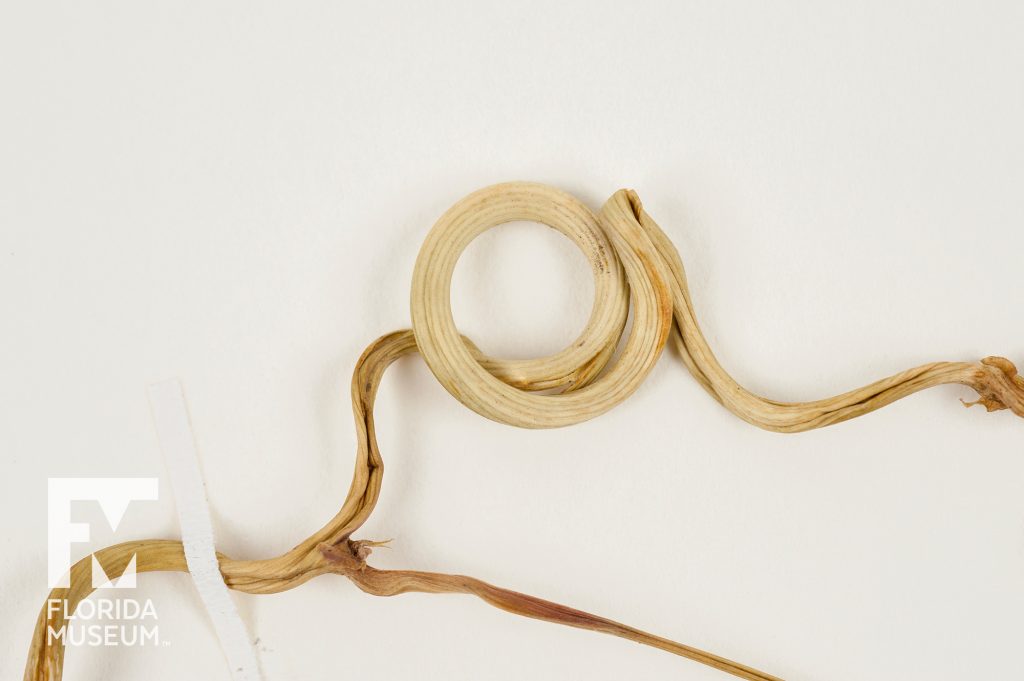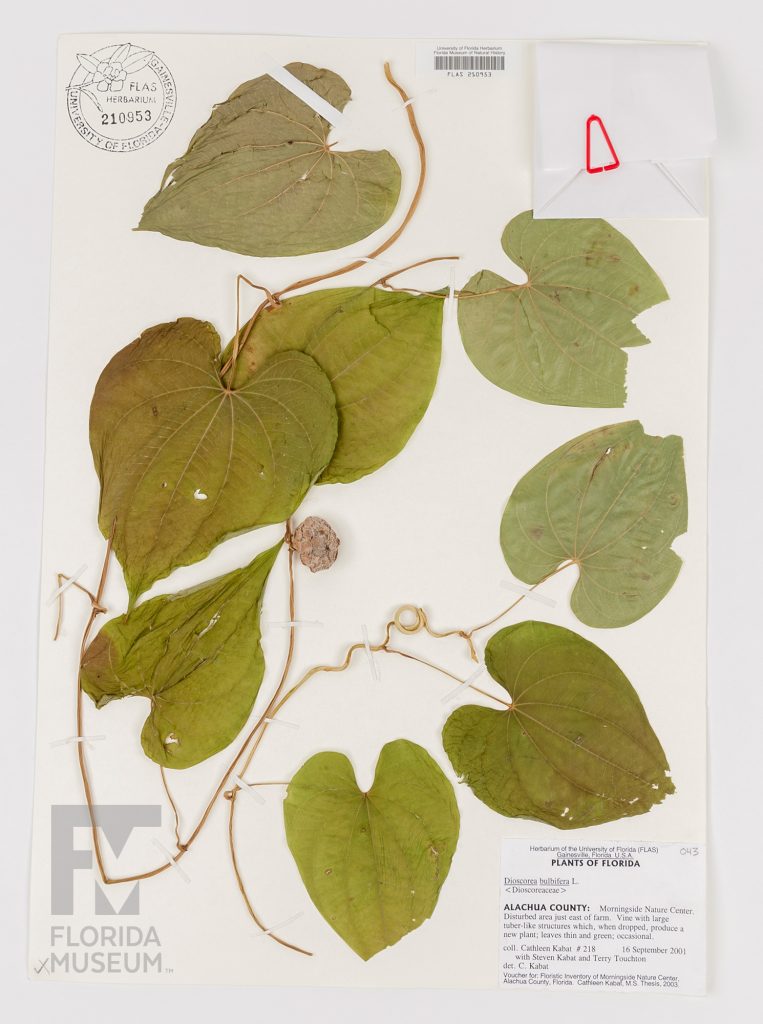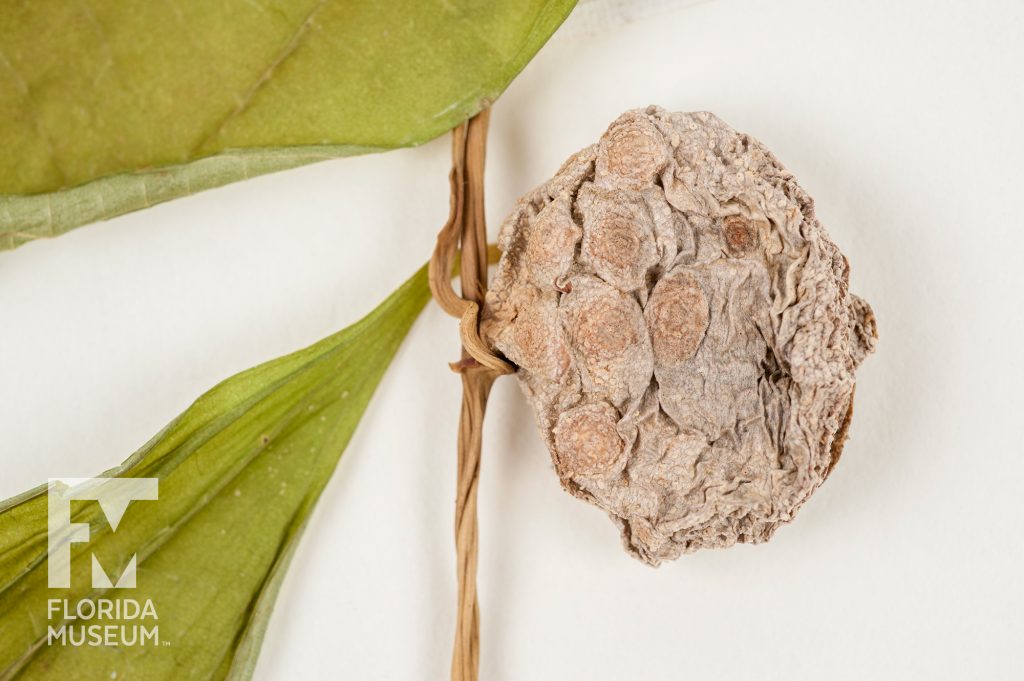Native to tropical Asia, the Air Potato thrives in Florida due to the warm climate – it can grow 8 inches a day! These plants grow thick and block sunlight to other plants, and so must be removed and destroyed to prevent native habitat destruction.
Summary
Air Potato (Dioscorea bulbifera)
Collected in Alachua Co., Florida, Nov. 2001
Collection
Story
This Herbarium specimen documents the presence of the air potato, Dioscorea bulbifera, in one of the nature parks here in Alachua County. Air potato is an invasive vine from the Old World tropics that is now found in almost every county in Florida. It’s said to have been introduced to the Americas from Africa during the slave trade.
In 1905, the U.S. Department of Agriculture sent a sample of air potato for assessment as an ornamental, and its rampant growth and potential to become invasive was readily apparent. Air potato forms impenetrable thickets that overgrow, break, and topple trees and then shade out native understory plants, eventually altering community ecology. For this reason, air potato was added to Florida’s noxious weed list in 1999. This means that it’s against the law to introduce, possess, propagate or move air potatoes in Florida without a permit.
Air potato bears male and female flowers on separate plants and only female plants have been observed in Florida. Since there are no male plants in Florida, there is no sexual or seed reproduction. Instead, air potato reproduces exclusively by tubers that form on the stem, also known as bulbils. A single plant is capable of producing 200 bulbils in a single growing season. After they’ve dropped from the vine, these bulbils usually undergo a brief dormancy and then sprout into new plants at the beginning of the next growing season.
In its native range, the subterranean tubers and aerial bulbils are used in traditional folk medicine and may be consumed after they’ve been processed to remove bitter, toxic compounds. There are also domesticated varieties that produce edible tubers. However, the variety that is naturalized here in Florida contains a number of toxins and should be regarded as poisonous.
Marc Frank
Extension Botanist, University of Florida Herbarium*
Florida Museum of Natural History
Additional Information
Exhibit
On display Sept. 23, 2017-Jan. 7, 2018, Rare, Beautiful & Fascinating: 100 Years @FloridaMuseum celebrated the Museum’s rich history. Each Museum collection was asked to contribute its most interesting items and share the stories that make them special. Though the physical exhibit is closed, this companion website remains online, providing an opportunity to experience the Florida Museum’s most treasured specimens.
Exhibit Area: Objects Tell Stories
Theme: Invasive Species of Florida
 Want to see more? Explore more than 300 breathtaking color photos of plants, animals, fossils and cultural heritage materials from the Florida Museum of Natural History’s collections in the award-winning book All Things Beautiful available from the University Press of Florida.
Want to see more? Explore more than 300 breathtaking color photos of plants, animals, fossils and cultural heritage materials from the Florida Museum of Natural History’s collections in the award-winning book All Things Beautiful available from the University Press of Florida.
*This title was accurate at the time the exhibit was on display in 2017. Please visit the collection website to verify current staff and student information.




